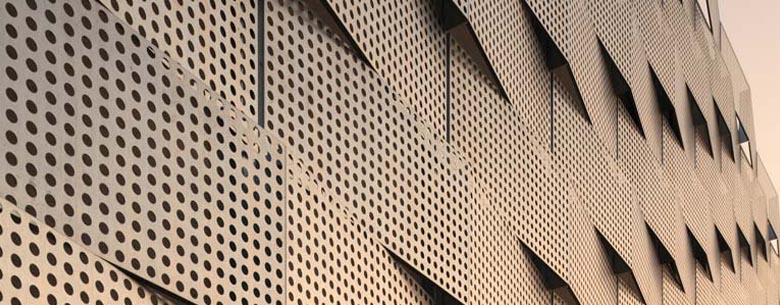Decorative Perforated Panels A Fusion of Aesthetics and Functionality
In the realm of modern architecture and interior design, decorative perforated panels have emerged as a versatile solution that seamlessly blends aesthetics with functionality. These innovative materials, characterized by their intricate patterns and customizable designs, serve a variety of purposes, from enhancing aesthetics to improving acoustic performance and controlling light.
What are Decorative Perforated Panels?
Decorative perforated panels are sheets of material, typically metal or wood, that are punctuated with a series of holes or cutouts. The arrangement and size of these perforations can be tailored to suit specific design needs, allowing architects and designers to create unique visual expressions. The use of such panels dates back centuries, though their modern applications have expanded dramatically thanks to advancements in technology and manufacturing processes.
Aesthetic Appeal
One of the most compelling reasons for the popularity of decorative perforated panels is their aesthetic appeal. These panels can transform ordinary spaces into visually stunning environments. By allowing light to filter through in artistic patterns, they can create dynamic shadows that change throughout the day. Whether used as wall cladding, ceiling tiles, or room dividers, perforated panels can contribute significantly to the overall ambiance of a space.
Architects and interior designers use perforated panels to create focal points and add texture to their projects. Whether it’s a sleek metal façade that exudes modernity or warm wooden panels that evoke a sense of coziness, these panels can be designed to align with various architectural styles. The ability to customize the size, shape, and arrangement of the perforations further enhances their versatility, enabling designers to match their vision to a specific project’s needs.
Functional Benefits
Beyond their visual appeal, decorative perforated panels provide a range of functional benefits. One of the most significant advantages is their ability to enhance acoustic performance. In environments such as offices, conference rooms, and auditoriums, sound absorption is crucial for creating comfortable and productive spaces. Perforated panels can be designed with specific hole patterns and backings to absorb sound waves effectively, reducing noise levels and enhancing speech clarity.
decorative perforated panels

Moreover, decorative perforated panels can improve energy efficiency in buildings. When used in façade designs, they can regulate sunlight entering the building, thereby reducing glare and contributing to a more comfortable indoor environment. This can lead to lower reliance on artificial lighting and cooling systems, resulting in energy savings and a reduced carbon footprint.
Sustainability Considerations
In today’s environmentally conscious world, the choice of building materials is critical. Many manufacturers of decorative perforated panels are committed to sustainability, sourcing materials responsibly and applying eco-friendly production techniques. Materials such as recycled metals or sustainably sourced wood are increasingly popular options for environmentally conscious buildings. Additionally, the longevity and durability of perforated panels minimize the need for replacements, further reducing environmental impact.
Versatility in Application
The applications of decorative perforated panels are vast. They can be used in both exterior and interior spaces. On the exterior, they serve as façade elements that improve a building’s visual identity while providing functional benefits like ventilation and sun shading. Inside, they find usage in areas like retail spaces to create appealing displays, restaurants for stylish partitions, or offices for sound management.
Furthermore, the trend toward open-plan designs has led to the increased use of decorative perforated panels as room dividers. These panels allow for spatial division without sacrificing light flow or visual continuity, making them ideal for modern office layouts and residential spaces.
Conclusion
Decorative perforated panels are a testament to the harmonious blend of form and function in modern design. Their ability to enhance aesthetic allure while providing practical benefits makes them a favored choice among architects and designers alike. As technology advances and sustainable practices become more prominent, the potential for decorative perforated panels continues to grow, promising exciting innovations in building and design for the future. Whether it’s improving acoustic comfort, regulating light, or beautifying a space, these panels stand as versatile tools that redefine the boundaries of architectural creativity.
-
Why Galvanized Trench Cover Steel Grating Resists Corrosion
NewsJul.10,2025
-
The Versatility and Strength of Stainless Expanded Metal Mesh
NewsJul.10,2025
-
Load Calculations in Steel Grating Platforms
NewsJul.10,2025
-
Keeping Pets and Kids Safe with Chicken Wire Deck Railing
NewsJul.10,2025
-
Hole Diameter and Pitch for Round Perforated Metal Sheets
NewsJul.10,2025
-
Aluminium Diamond Mesh in Modern Architecture
NewsJul.10,2025
Subscribe now!
Stay up to date with the latest on Fry Steeland industry news.

